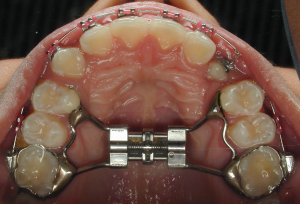A prospective patient came by one day to interview me. She was looking for a new dentist for her family. She and her husband were intelligent people and owned two successful businesses. This woman was doing her best to select a good dentist for her family- or so she thought.
The questions she asked centered on what expensive gadgets I had bought for my office. Did I have digital x-rays? Did I have a laser? How about one of those expensive CAD-CAM machines that makes crowns while patients wait?
Sorry to say, I am a conservative business owner who is leery of incurring debt to buy expensive and unproven equipment. I must have disappointed this woman, as she did not return. Doubtless she found a dentist with most of the expensive gadgets she thought were standard for good dental treatment.
It is unfortunate, but a lot of people think many expensive gadgets = quality dental care. This is in no small part due to manufacturers’ propaganda. In the high-overhead professions of both medicine and dentistry, it is a hard sell to get docs to buy expensive new equipment. Nobody wants to be an early adopter who spends $50,000 on an invention that doesn’t live up to its expectation.
So the trend is to first advertise any new expensive technology directly to patient populations. Without a professional background and access to scientific journals, it is easy for the average patient to be convinced that some new gadget is the greatest thing since sliced bread.
The next step is for manufacturers to post an online list of dentists who bought their product, so patients can view and patronize these practitioners. In this way, manufacturers seek to reward dentists who make a large purchase of their new equipment.
Am I against new technology? Absolutely not. My problem is that much of it does not work out to be practical or economical. Someone has to pay for this expensive stuff. Invariably it is the patients via higher fees. It is instructive to look through the “For Sale- Used” ads in my dental journals and see what is available. Invariably I encounter expensive items that were highly touted three to four years prior, but did not end up being a worthwhile investment. These gadgets sell used for pennies on the dollar.
Would digital x-rays save my patients radiation over my top-notch film and equipment? Not much, if any. Intraoral digital x-ray sensors are uncomfortable in the mouth and cannot be sterilized. The chief convenience is immediate reading by the dentist.
How about spending thousands of dollars for software to trace and measure parameters of skull x-rays for orthodontics? It would save me time, but considering the fact I analyze about eight such x-rays a year, would it make sense? Hand tracing and measurement take me a little time, but the result is just as good.
Would investing over $100,000 in a CAD-CAM machine to make crowns in the office do better than my lab technicians? Not from the examples I have seen. And the crowns still have to be custom-stained to look authentic. But again, it is convenient for the dentist not to have to schedule a second patient appointment for cementation.
Would a $40,000 laser work magic on my patient’s gums? Well, it is not true that patients don’t need anesthetic injections before using lasers. These machines cut very slowly, and stink when they do. The only convincing use I have seen for lasers is to cut gums around implants, where my electrosugery unit cannot be used. In dentistry at least, lasers seem like expensive toys.
By now I am sure you get the picture. With high enough patient volume, there are a few technologies that sometime make sense for a practice. These are few and far between. For every technology that proves itself in medical or dental practice, there might be nine that disappear because they do not live up to expectations.
In dental and medical practice, if you don’t get diagnosis and treatment planning right, no technological marvel in the world will make up for it. Technology is no substitute for experience in surgery. The main effect of technology is to increase doctor productivity. In general, the number of high-tech gadgets in an office is not a good indicator of quality of treatment you will receive.





